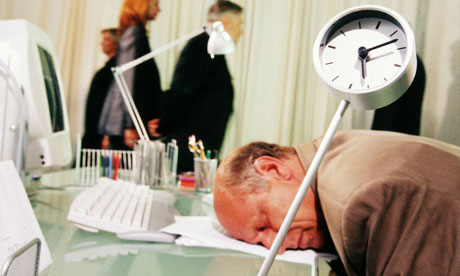Things have changed dramatically in the job market over the past five years. Seven years ago, I got my first ‘real’ job within two months of graduating from university; nowadays, it can take several months and maybe even years for some graduates. The competition is undeniably a lot tougher – a small business owner recently shared with me his complete shock at receiving 400 applications for one secretarial position they had advertised.
You can imagine with that amount of applications, no employer has time to go through each CV in detail so if you want to stand a chance of being shortlisted for interview, you literally have to make an impact, and fast. The average employer takes around 30 seconds to scan a CV and make a judgement on whether you are what they are looking for. This is about that all-important first impression and there are three components to this, namely the look, lingo and length of your CV.
Get the look right
Jobseekers always ask which is more important on a CV, the way it looks or what it says – the answer is both. If your favourite chef served up your favourite dish on a dirty, chipped plate with food dripping down the sides, would you still eat it? For most people, the answer would be a resounding “no”. In much the same way, a poorly presented CV can ruin your chances of being shortlisted for interview – even if you are the best candidate for the job. You can avoid this by applying these very simple tips for a clean, clear presentation:
Choose the right fonts – stay away from outdated serif fonts like Times New Roman and instead go for modern, sans serif fonts such as Verdana or Tahoma for a fresher feel.
Get the size right – if your text is too small it makes your CV crowded and hard to read. If it is too big on the other hand, it makes it look like you don’t have much to say for yourself. The perfect font size is generally a 10 or 11 for the body text, 14 for sub-headings, and a big massive 22 point for the main page header (which should be your full name to really make that impact and grab the employer’s attention).
Use visual aids – bullet points, line breaks, bold formatting, columns, tabs. These are all simple tools you can employ on your CV to make more impact in the way it looks.
Be consistent – whatever fonts and style settings you decide to use on your CV, be sure to keep it the same throughout. There are few things more off-putting on a CV than seeing a real mess of fonts and paragraph tabs all over the place.
Avoid ready-made template CVs from questionable online sites – chances are if you’ve come across this template, so have other jobseekers. Adding a personal touch to the design and layout of your CV can make yours stand out from the crowd.
Lingo – what you say and how you say it
The other half of a winning CV is the content. Not only is what you say on your CV important, how you say it matters too. When it comes to grabbing the employer’s attention in 30 seconds, the most important part of your CV is the introduction, otherwise known as the personal profile or statement. This is the first part of your content the employer will read so it must be really engaging, but most of all short and to the point. The perfect introduction should – in no more than two to three sentences – summarise who you are, what you’ve achieved, and what skills you possess, without using any cliches and killer buzzwords. Just like the blurb on the back of a book, an introduction done well will entice the employer to read on to the rest of the CV.
The length matters
Once you’ve sorted out the content and the visuals, the final step is to make sure the length of your CV is right. If your CV is too long, instead of grabbing the employer’s attention (remember, he or she potentially has 399 other CVs to go through), you immediately lose it. A CV should be an average of two pages long – an overly long CV is boring and time-consuming, and a CV that is too short immediately suggests that you don’t have enough experience, which could potentially put you out of the race.










